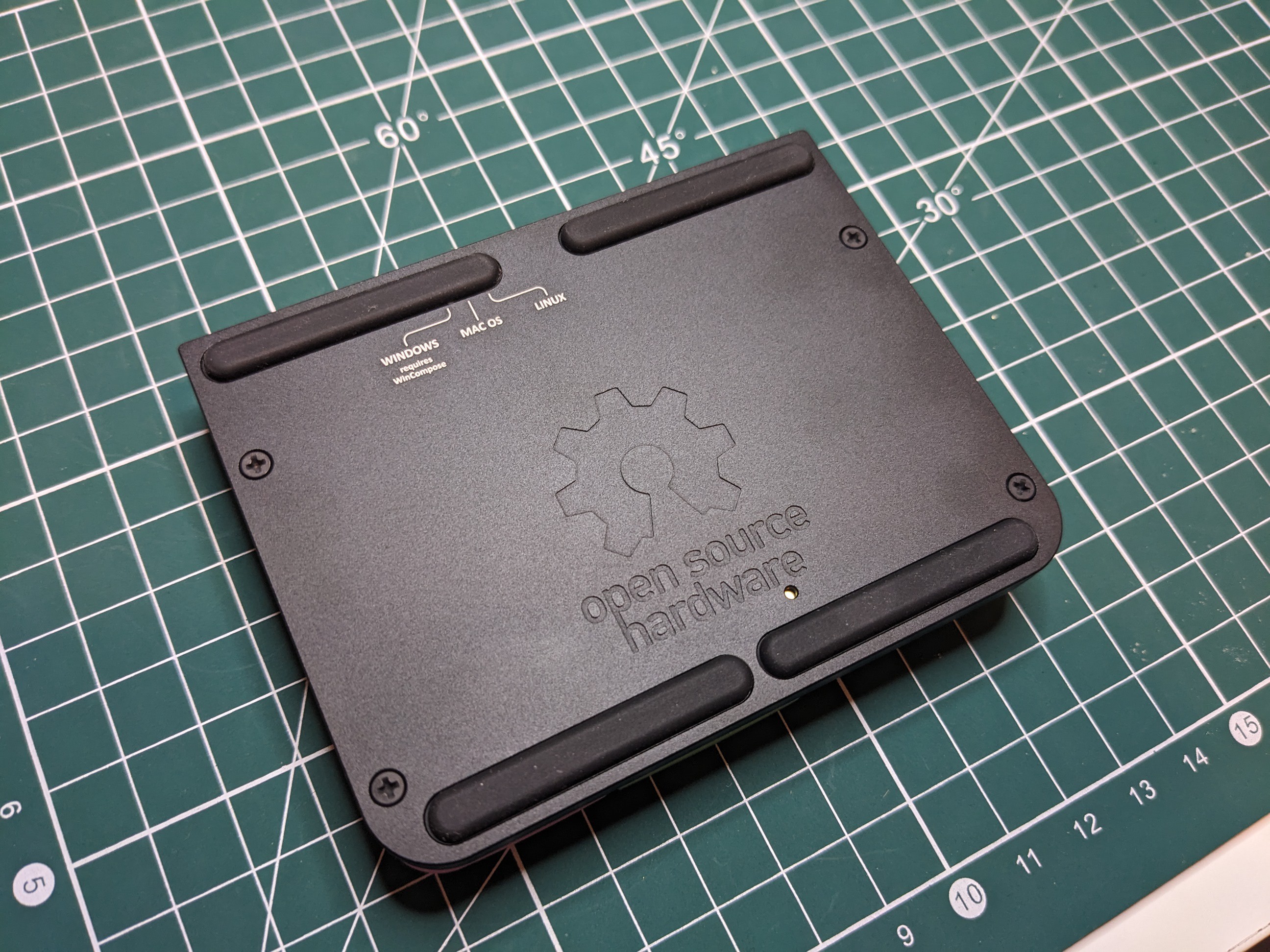Many changes have been made since the previous log update. All parts, including the enclosure, electronics, and keycaps, have seen improvements. This log will give a brief overview of these changes and discuss the future plans for this project.

.
Keycaps
I was lucky to find Loic from 3dkeycap.com, who has been an invaluable resource and has spearheaded the development of the keycaps. Thanks to his efforts the Mathboard now uses low profile keycaps which helps make it appear sleeker. The colorful keycaps are resin-printed, again all thanks to Loic. The keycap graphics are UV printed as on the previous version and appear to be quite rugged. The graphics do not come off during regular use, but time will tell how long they really last. It will of course be possible to buy replacement keycaps.
Enclosure
The enclosure has seen a massive upgrade. While the previous version was 3D-printed, the new Mathboard uses a solid aluminum enclosure, anodized to a matte black, and laser marked to give a rather clean surface finish. It also makes it feel sturdier and gives a much more professional feel to the Mathboard than the previous 3D-printed enclosure did. Finding a reliable and cost-effective supplier for this case was a challenge. I contacted about a dozen local machine shops who were happy to provide me with quotes, but whose prices were so astronomical I was forced to look elsewhere. Via alibaba I found a machine shop that could have them manufactured for about 4x cheaper than any of the local manufacturers. It is upsetting how far we are from local manufacturing of consumer goods being economically viable.

PCB
The PCB now integrates the microcontroller directly, instead of being a soldered-on module as in the previous version. This allows the Mathboard to be much thinner and made it possible to place the USB port on the back of the Mathboard instead of on its side. The PCB is designed in KiCAD and manufactured/populated by JLCPCB.

Future plans
So, what's next for the Mathboard? I plan on making it commercially available in 2025. I will therefore have to look into new aspects of this project: How to start a company, register a trademark, doing international ecommerce, and much more. I am grateful to have such an interesting project to work on which teaches me how to do all these things!
 Magne Lauritzen
Magne Lauritzen
Discussions
Become a Hackaday.io Member
Create an account to leave a comment. Already have an account? Log In.